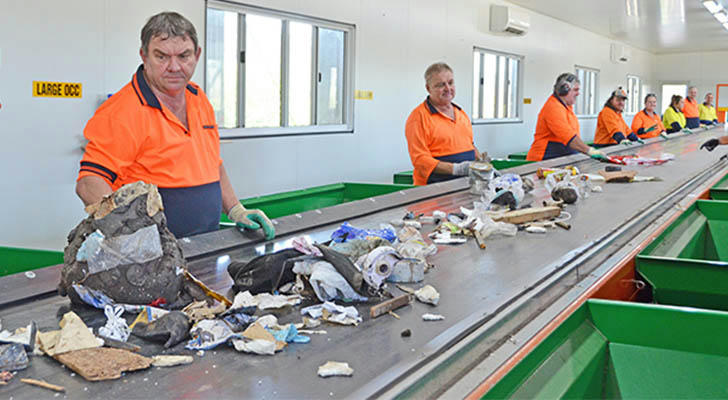How to Become a Waste Sorter: A Simple Guide

Waste sorters play an important role in helping protect the environment. They work to make sure that recyclable materials are separated from trash, hazardous waste is handled safely, and everything is disposed of correctly. This guide explains how to become a waste sorter, what the job involves, and the opportunities available in this field.
What Does a Waste Sorter Do?
As a waste sorter, your main tasks will include:
• Sorting Materials: You’ll sort waste into different categories, like plastics, metals, paper, and electronics. Sometimes, machines help with this, but you’ll also do it by hand.
• Identifying Recyclables: Your job is to pick out items that can be recycled, such as cardboard, glass bottles, and aluminum cans.
• Handling Hazardous Waste: Some materials, like batteries or chemicals, need special care. You’ll make sure these are handled properly to avoid accidents.
• Operating Machines: Many sorting facilities use machines like conveyor belts to help move and sort waste. You may need to operate or help manage these machines.
• Keeping the Work Area Safe and Clean: You’ll follow safety rules to avoid injuries and keep your workspace organized.

What Qualifications Do You Need?
To become a waste sorter, you should meet a few basic requirements:
1. Education: You don’t usually need a high school diploma, but basic reading and understanding skills are helpful.
2. Physical Fitness: The job requires standing, bending, and lifting, so being physically fit is important.
3. Attention to Detail: You need to carefully sort waste to ensure everything goes in the right place.
4. Basic Recycling Knowledge: It helps to know how to recycle properly, although you’ll get training on this.
5. Teamwork and Safety Awareness: You’ll often work with other people, so being a good team player is important. You also need to follow safety rules to stay safe on the job.
Training for the Job
Most waste sorters get on-the-job training. You’ll learn:
• How to Sort Waste: You’ll learn how to recognize recyclable materials and separate them from non-recyclable ones.
• Safety: Training will cover how to use protective gear, handle hazardous waste, and stay safe.
• Using Machines: You’ll learn how to use the machines that help with sorting, such as conveyor belts and compactors.
• Understanding the Environment: You’ll learn why sorting waste is so important for the environment and how to stay healthy at work.

Career Growth
Waste sorting can lead to many career opportunities:
1. Entry-Level Sorter: You’ll start with basic sorting tasks and learn the job.
2. Senior Sorter: After gaining experience, you might take on more complex sorting tasks or train new workers.
3. Team Leader: If you get more experience, you could become a team leader and help manage a group of sorters.
4. Manager: In a management role, you could oversee an entire sorting plant or environmental project.
5. Certification: Getting certified in waste management or recycling can help you move up in the field.
Industry Growth
The recycling and waste management industry is growing, which means more job opportunities for waste sorters. As more cities and companies focus on recycling and reducing waste, there’s a higher demand for skilled sorters. Plus, new technology in waste sorting—like automated machines and AI—means that sorters who can operate these tools are in high demand.
Salary and Benefits
• Pay: Waste sorters usually start out earning near minimum wage, but with experience, you can earn more.
• Benefits: Many employers offer health insurance, retirement plans, paid time off, and safety equipment.
• Bonuses: Some companies offer bonuses for meeting targets or working efficiently.
How to Get Started
Here are the steps you can take to start your career as a waste sorter:
1. Look for Job Openings: Find waste management companies or recycling centers that are hiring.
2. Prepare Your Resume: Highlight skills like teamwork and physical strength, even if you don’t have direct experience in waste sorting.
3. Apply for Entry-Level Jobs: Start with an entry-level job and gain experience.
4. Join Training Programs: Take advantage of any training provided to improve your skills and learn new ones.
5. Network: Talk to other professionals in the field to learn about more job opportunities.
6. Consider Certification: Taking a course in waste management or recycling can help you move up faster.
7. Stay Informed: Follow news about recycling trends and new technologies to stay competitive in the field.
Real-Life Example: Success at the San Francisco Recology Plant
A great example of waste sorting making a difference is the Recology plant in San Francisco. The city has set a goal to divert 80% of its waste from landfills. Waste sorter Maria Gonzalez started as an entry-level employee with little experience but worked her way up through training. She learned how to sort materials, operate machines, and ensure safety. Today, she is a senior sorter and mentors new workers. Maria’s story shows that hard work and training can lead to a rewarding career while helping the environment.
Conclusion
Becoming a waste sorter is a rewarding career that helps reduce pollution and protects the environment. The job offers opportunities for growth, good pay, and benefits, making it a great choice for those who want to make a difference. As recycling becomes more important, the demand for waste sorters is only going to grow. Whether you start at an entry-level position or eventually move into a leadership role, waste sorting can be a fulfilling and impactful career.
